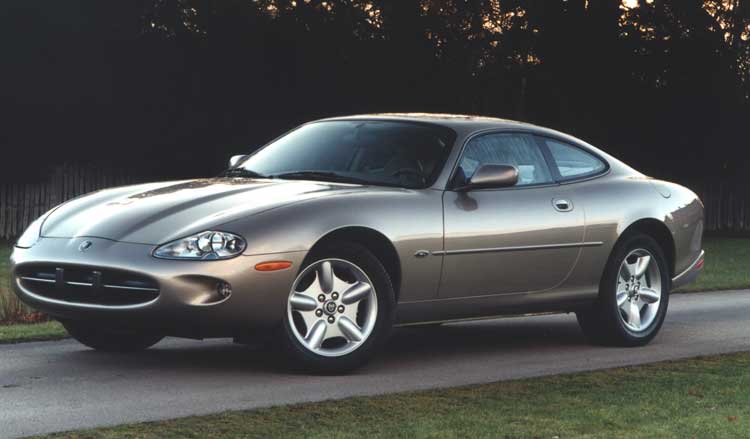Jaguar XK8
An era ended when the XK8 bowed out last year, but with its pedigree, it's already a collector's item, says Sean O'Grady

Now that Jaguar has revealed its radically new design direction (the radical C-XF was recently revealed), this seems as good a time as any to look back at Jaguar's old design direction. In particular, to reappraise the company's recently departed grand tourer, the XK8.
When it was replaced by the all-new XK last year, it really did mark the end of an era. The advanced all-aluminium bodyshell of the new XK clearly took some of its cues from the old car, but virtually nothing (apart from the relatively new V8 power plants) was carried over. Which was just as well since the XK8 had borrowed a good deal from the car that it had replaced, the long-running XJ-S, first launched in 1975, which, in its turn, was based on the running gear of the original XJ saloon of 1968. Now that's what I call heritage.
So, it was predictable that, when the XK8 came to the end of its life, much would be made of its antique aspects and dynamic shortcomings. The new car, it was said, was better-looking (it was better-proportioned, with a shorter rear overhang), a harder machine, and, in its use of materials such as aluminium in place of the usual steel, a very go-ahead design indeed.
All of which was true. Not for nothing did the engineers at Mercedes-Benz, working on their new CL sports coupé, dismantle an early example of Jaguar's latest with a view to seeing what their newly rejuvenated rival was up to. They were, we're told, impressed. All the evidence you need that the XK is a great car.
But so, in its different way, was the XK8. Being a sporty Jaguar with such a long and distinguished lineage, it was always going to be an "instant classic". When it was released in 1996, long-awaited as it was, it did not disappoint. It looked the part: feline, aggressive yet graceful, obviously a Jag. And like all proper roadsters it was a "2+2" with very small rear seats.
Nor was it lacking in talent on the road. Pitting it against the then new Aston Martin DB7 and the BMW 840Ci (if any one remembers that), my colleague John Simister, writing in Car magazine at the time, remarked: "The Jaguar wins, clearly, because it looks, goes, handles and rides the best (it raises the game here), and costs the least by a substantial margin. Here is a proper sporting Jaguar, which we haven't seen for so long that people have forgotten what some Jaguars once were."
That reference to the car's price tag confirmed another little component of the XK8's Jaguar pedigree. Ever since Sir William Lyons' SS models in the 1930s, one of Jaguar's abiding missions was to provide superlative performance at a (comparatively) low cost. So it was with the XK8 (and, indeed, still is with today's XK). But buying a used one is an even better bang-per-buck proposition.
After the 1970s, quality problems and worries about the car's reliability pushed used-Jaguar values to absurdly low levels. In this, the XK is no exception.
Now may well be the best time to buy one of these wonderful GTs, because that reputation is still unfairly sticking to the brand, fuel prices have made gas-guzzling V8s such as this very unpopular, and the XK8 is still too young to be a "proper" classic. But why wait until you'll have to rebuild one and spend days wandering around scrap yards in search of that elusive piece of trim?
The XK8's prices are also depressed because it's living in the shadow of its newer, and thus much more desirable, younger brother. Buyers in this sector of the market tend to be neophiles, you see. Yet the XK8 was one of the last Jaguars to be built at the historic Browns Lane works in Coventry, for many, the only place that a Jaguar could or should call home. So the XK8 is authentic as well as classy.
Not that an XK8 is always an unalloyed blessing (no pun intended). Some early models suffered extremely serious engine problems, often resulting in the entire unit being replaced. The fault lay in some of the cylinder linings, which were made from a substance called Nikasil, which could wear very quickly and lead to failure. The XK8 is based on the old XJ-S, so its resistance to corrosion isn't all that it might be, and, as ever, a full main-agent service history will give you peace of mind.
A usable XK8 can be had for upwards of £15,000, with rough ones now into four figures, and last-of-the-line minters going for £40,000-plus - still a nice discount to the final list price of about £60,000-plus.
Depending on your abilities as a welder, you can spend as little as you like on an XK8. You also have the choice of a convertible or a coupé, and both of these in standard or uprated XK/R form. My tip would be to buy the best example you can and go for a convertible in the standard state of tune, with traditional walnut and leather trim. Such a car will probably be less problematic to run and is hardly less enjoyable to drive. Indeed, accelerative as the XK8 was, it was always at its best with the top down and making steady but seemly progress across vast distances. Just be ready for the vast incursions it will make into your bank balance.
Subscribe to Independent Premium to bookmark this article
Want to bookmark your favourite articles and stories to read or reference later? Start your Independent Premium subscription today.

Join our commenting forum
Join thought-provoking conversations, follow other Independent readers and see their replies